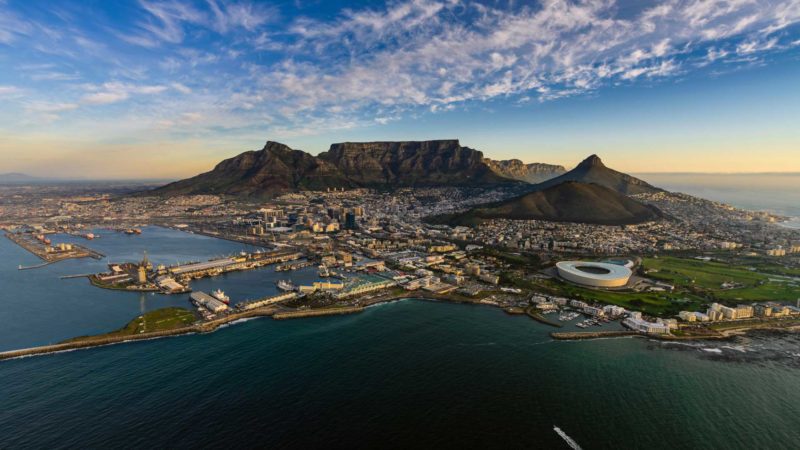If you have already decided to see this beautiful country, you are probably asking yourself “What is the best time to visit South Africa?” The short answer to that is September or October, but the more complex answer is so much more interesting. The best time of year to go on your very own South African adventure totally depends on what you want to do on your vacation. Whether you’re going during the summer months or during the winter months, there is always something to do and see!
To help you decide when to visit the Rainbow Nation, we have put together this season-by-season guide. In it, you can find information on each season’s weather, what times of year to avoid in order to ditch the crowds, and highlights of what to do during each season. By the end, you will hopefully have a clearer picture of when to fly down and start your vacation!
There are tons of attractions to see while you’re there, such as the beautiful Port Elizabeth, the stunning Cape Winelands, and even the famous Kruger National Park! Whether you’re coming for an African Safari made for a family holiday or for the beaches, you will surely have a blast in the Rainbow Nation.
South African Weather
South Africa boasts many different climates, as it’s an incredibly vast country. There, you will find areas that are much like the desert, others like tropical beaches, some like temperate woodlands, and even snow-topped mountains!
Unlike what happens in many African countries, South Africa has four distinct seasons: Winter, Spring, Summer, and Fall. Another interesting fact about the weather here is that there aren’t a lot of differences between the North and the South. Rather, temperatures, rainfall, and snow vary depending on elevation and ocean currents.
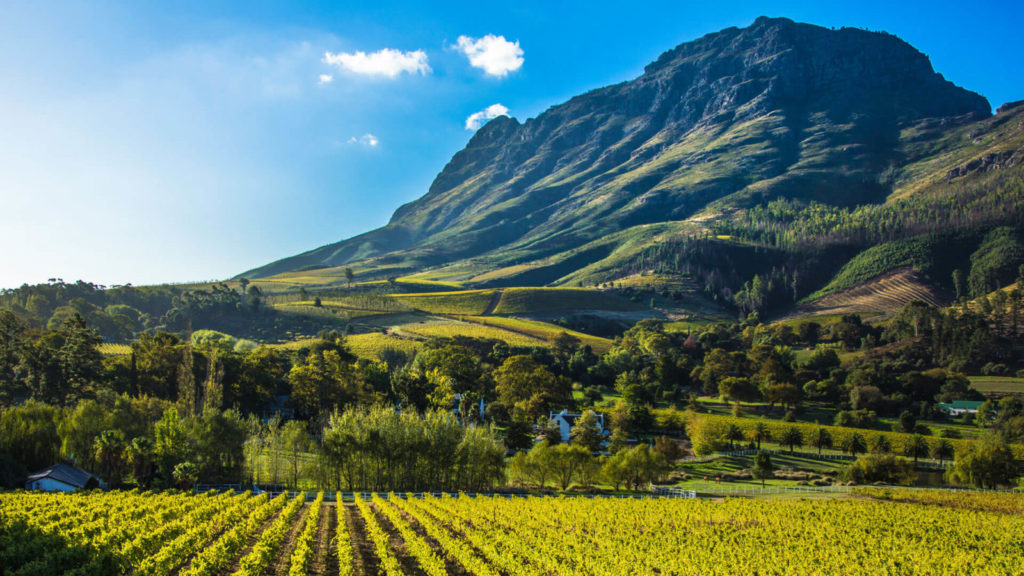
Since South Africa is located on the southern hemisphere, their Fall and Summers occur from October to April. Winter and Spring, on the other hand, take place from May to September. When making your plans, don’t forget that the seasons here are “inverted” in comparison with North America!
To put it simply, Winter is the dry season, while the Summer corresponds to the rainy season. This means that if you’re traveling between October and April, you may encounter rain; whereas if you are traveling between May and September, the chances of getting rained down on are much lower. The regions that have a subtropical climate, however, experience more or less the same amount of rainfall all year-round (as is the case of Port Elizabeth), while other areas of the country have slightly more rain during the winter.
As we’ve said, the weather in South Africa is by no means uniform. In Cape Town, the average temperatures are 70 degrees Fahrenheit during the Summer and 55 degrees Fahrenheit in the Winter. Port Elizabeth, another very popular destination in the country, has average daily high temperatures of 75 degrees during the Summer and an average of 68 degrees in the Winter. Durban, on the other hand, famous for its beaches, boasts an average temperature of 85 degrees Fahrenheit in the Summer months and of 77 degrees Fahrenheit in the Winter months.
After learning all this, which is the best time to visit South Africa? How can you choose the best months to see the country? And when should you expect warm days and night, versus when should you pack a winter coat? The ideal time to travel to the southern tip of Africa depends on what you want to do. So let’s break down what visiting the Rainbow Nation is like during each season of the year.
Visiting South Africa in the Winter
The Winter months here are June, July, and August. Throughout most of the country, the temperatures are lower than usual and sit above 50 degrees Fahrenheit. If the image you have of South Africa is one of constant sun and little to no rain, then Winter is probably the season for you.
Keep in mind, though, that the average temperatures in the early mornings and late afternoons tend to be lower. If you’re going on early morning or evening game drives, pack a windbreaker and some warmer clothes too! This isn’t true for all of South Africa, just something to plan for.
Safari Tours
The best places to visit during the dry season are the large reserves spread all over the country. They all have different things to offer, from self-driven safari tours to safari lodges where you can spend a night or two, and even private reserve estates. The hard part will truly be picking just one reserve to see!
June, July, and August are the best months to go on these safari tours, as this is the time when the vegetation is driest. Since the grass isn’t as tall as it usually is in the summer and the trees lose some of their foliage, it’s much easier to spot the wild animals during the winter. Furthermore, a lack of water draws all animals to predictable water sources, which makes it significantly easier to see them all in one place. Tour operators know all about where prey and hunters gather during the winter, and so they will drive you to the best spots on the reserve.
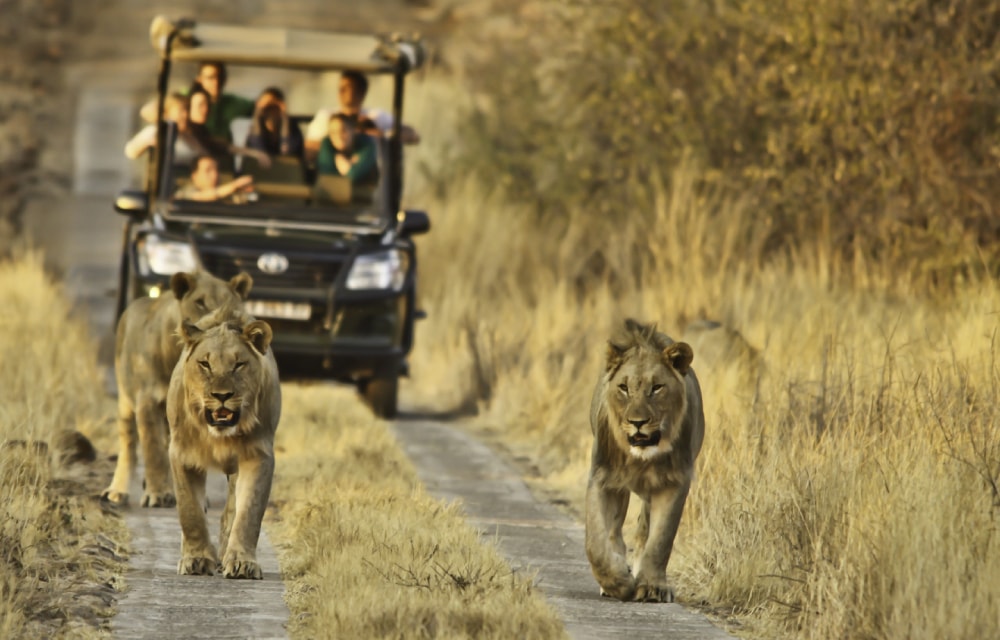
The number of species you can see at most of these big game reserves is in the hundreds. Some animals can’t even be seen anywhere else in the world! But what most visitors look forward to seeing the most are the infamous “Africa Big 5.” While there was a time when this term was only used by big game hunters, nowadays most tour guides use it as well. It refers to lions, leopards, rhinoceros, elephants, and Cape buffalos. For a lot of tourists, this is the highlight of their trip to South Africa!
If you’re sold on going on an African safari tour, now comes the part in which you have to choose one National Park to visit. We’re not exaggerating when we say there are dozens of reserves to choose from. There really are! Kruger Park (also known as the Kruger National Park) is one the most famous safari reserves, located in the northeast of the country, close to the border with Mozambique. The Madikwe Game Reserve is also a great alternative if your travel plans are based on the northwest of the country. If you’ve always wanted to spend a night near wild animals on upscale safari lodges, Madikwe Game Reserve is the place to go! Alternatively, if you’re most interested in seeing large African elephants up close, the Addo Elephant National Park is perfect for you. As the name suggests, it is dedicated entirely to these gentle giants, and the park even offers you the chance to sleep there for a few nights in lodges. Lastly, if driving too far away from Cape Town or Port Elizabeth is a big no-no for you, the Karoo National Park is great. It boasts over sixty different species of mammals, from lions to rhinos, and has enjoyable trails accessible for all people.
Self-Drive Tours
Winter is also great for self-driven tours of the country. Renting a car and driving around the country on touristic routes is a great way of seeing the best of South Africa. Since there are so many interesting attractions spread all around the country, planning a road trip is a great idea.
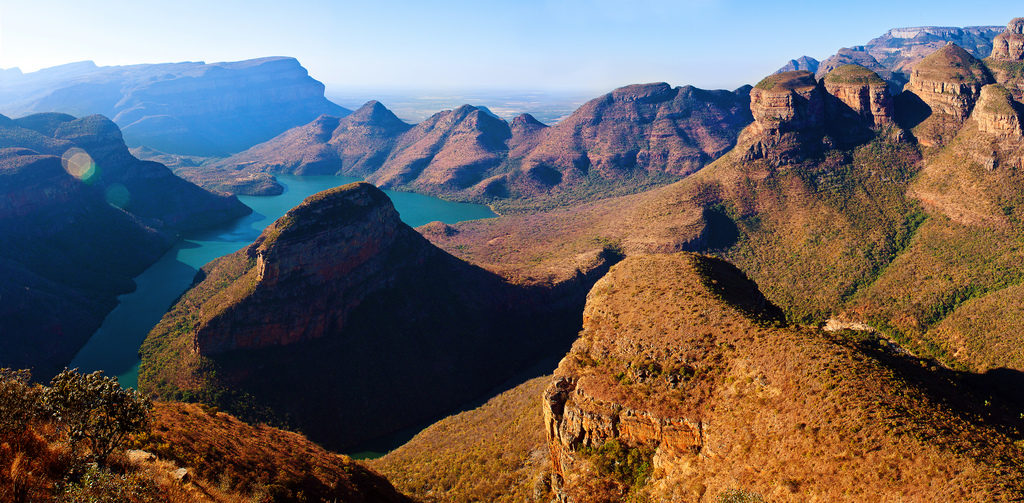
The Blyde River Canyon is one of the spots we recommend you visit on a self-drive tour. The winter months mean drier and less lush vegetation to the canyon, but they also bring fewer mosquitos and rarely ever any rain to weigh you down. Hiking all the way up the the top of the canyon would be an experience no nature lover could pass on. It’s not just a coincidence that locals call it the “Panorama Route.” The lookout points offer amazing views (one of them is even known as God’s Window) over the Klein Drakensberg escarpment. Make sure to visit the Blyde River Canyon during the daytime, so as not to miss one of the best places to visit in South Africa.
Self-drive tours don’t end here, though. Only the highland roads close during the winter when they get too icy. But luckily this still leaves you with plenty of routes to travel through. A great stop along a winter roadtrip is Cape Winelands. This region is located right outside Cape Town and is home to the best wineries in the country. When you visit Cape Winelands in the winter, expect cozy, warm wine cellars and dozens of vintage bottles to taste. This is the dream holiday for any wine enthusiast, and a big reason why this region is featured in so many travel guides and travel blogs!
After you are done with the wine tastings, take a drive to the coastal areas surrounding Cape Winelands and Cape Town. There, you will find beautiful beaches and quaint neighborhoods dotted along the coast. Coming here during the winter will really make you think: “Who says the beach can only be visited in the summer?” With views like this, you won’t need to wait for the beach holidays to head down to the seaside…
Surfing
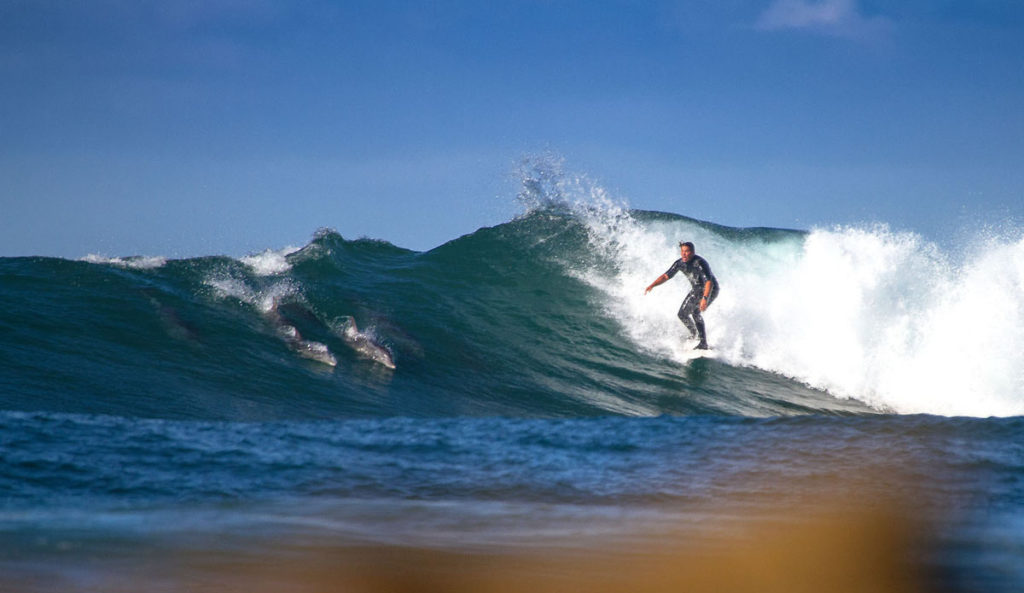
Unsurprisingly, the colder months are the best time of year for eager surfers. South Africa has a very respectable number of beaches perfect for surfing. And since there are so many miles of coast, there is bound to be a beach ideal for you. You have both the Atlantic and Indian Ocean waters to surf in — what could be better?
In the Western Cape, Elands Bay, Long Beach, and Muizenberg draw in surfers from all over the world. Their great waves, stunning mountainous surroundings, and accessibility put them on a travel blog and travel guide lists.
The Eastern Cape is also to be respected. Jeffreys Bay, for example, has supertubes year-round and hosts the World Surfer League’s J-Bay Open. This beach is so popular that in the summer it gets completely crowded, thanks to the Christmas and beach holidays in December. See why it’s so great to go during the Winter?
Last on our list, we couldn’t forget the Durban area in KwaZulu-Natal. This city has dozens of beaches, all of them quintessential and constantly voted the best in the country — for surfers, swimmers, and families. Its constant quality waves year-round and the surf vibe here make it one of the best places to visit in South Africa — even if you’re not a fan of the sport!
Events During the Winter
If you equate traveling with absorbing the local culture, then these two next events are not to be missed. They take place every Summer and are a fantastic way of understanding the customs of each South African region.
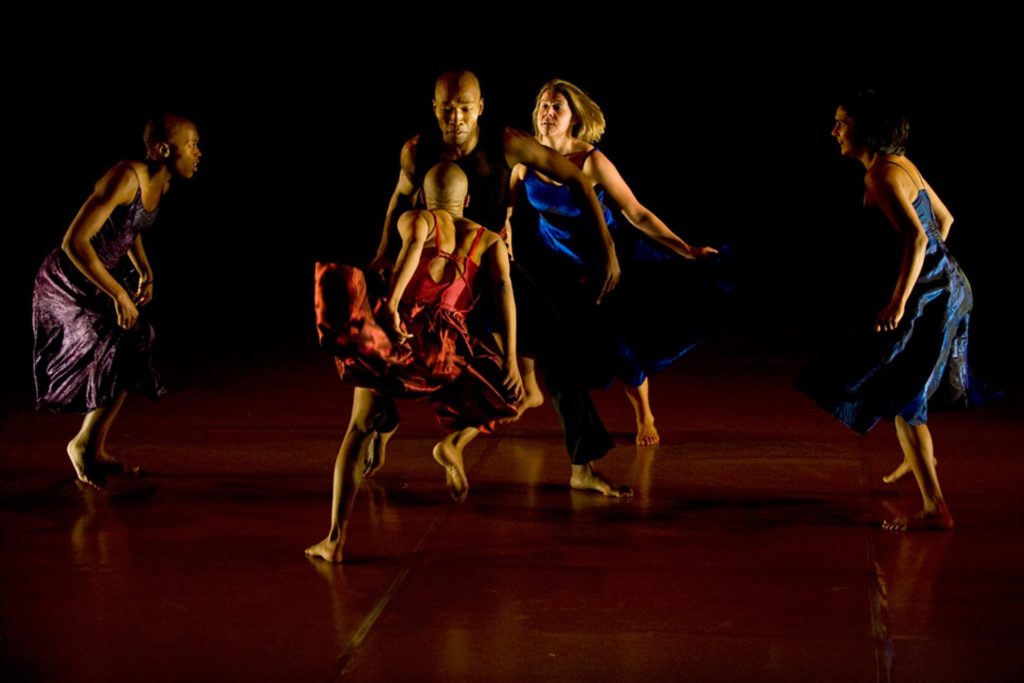
Firstly, there is the National Arts Festival, hosted in June and July in Grahamstown. Located just an hour and a half away from Port Elizabeth, this small province puts on the biggest arts event in all of Africa! It runs for eleven days straight and focuses entirely on the performative arts. Therefore, you will see a lot of theatrical dramas, improv shows, operas, and even street entertainers performing.
Secondly, the Knysna Oyster Festival takes place in July in the town of Knysna in the West Cape. This stunning seaside town offers amazing views over the turquoise waters of the ocean and delicious oysters. You have probably seen it in your travel guide or on a travel blog as a must-stop for foodies and seafood enthusiasts. During the festival, a series of events are put on to showcase the delicious oysters caught and prepared locally. From eating challenges to gourmet tastings, if you like oysters, you will feel very welcomed here in Knysna.
Visiting South Africa in the Spring
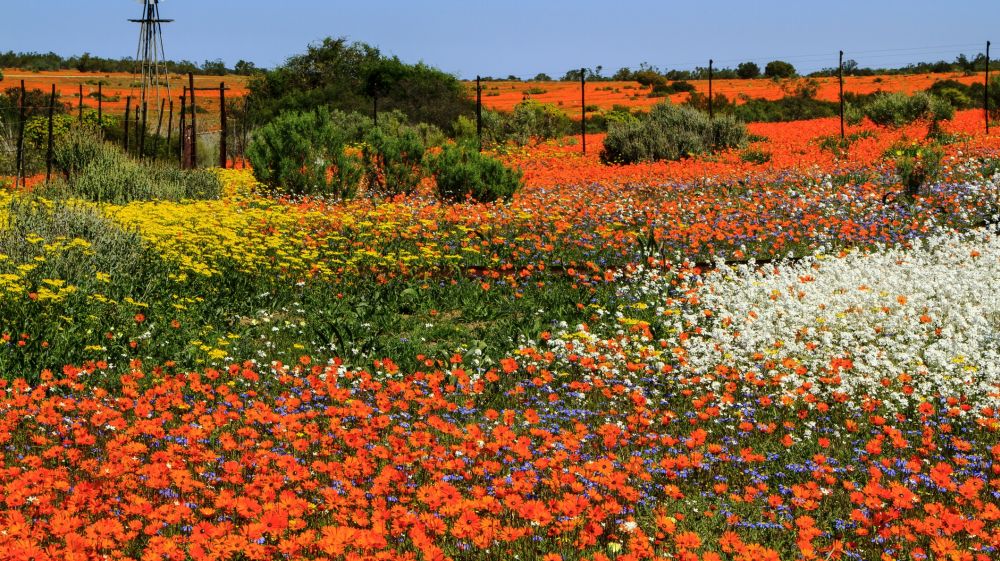
The months of September, October, and November are the best to visit South Africa in general. The weather is pleasant throughout the entire country, the temperatures start to rise, the early mornings are no longer chilly, and you can expect warm weather on some days. Days also get longer, each having a couple of hours extra of sunlight compared to the winter months, which gives you more time to be out and about. But don’t just take our word for it! Any research online and through travel guides will show you the expert advice: travel in the Spring.
On top of all that, this is not yet the high season for traveling. This means that airfare is cheaper, as are accommodation bookings. It also means that national parks, beaches, cities, and other popular tourist attractions aren’t crowded. If you’re planning a holiday to South Africa while on a budget, the Spring is an excellent time for your trip!
Whale Watching
Again, it’s clear to see why nature lovers adore South Africa. The country not only has lush vegetation but it is also a hotspot for whale watching. Dozens of whale species swim along the Eastern coast of South Africa on their way to their breeding grounds. Most notably, you will see humpback and southern right whales, but keep an eye out for bottlenose and humpback dolphins as well!
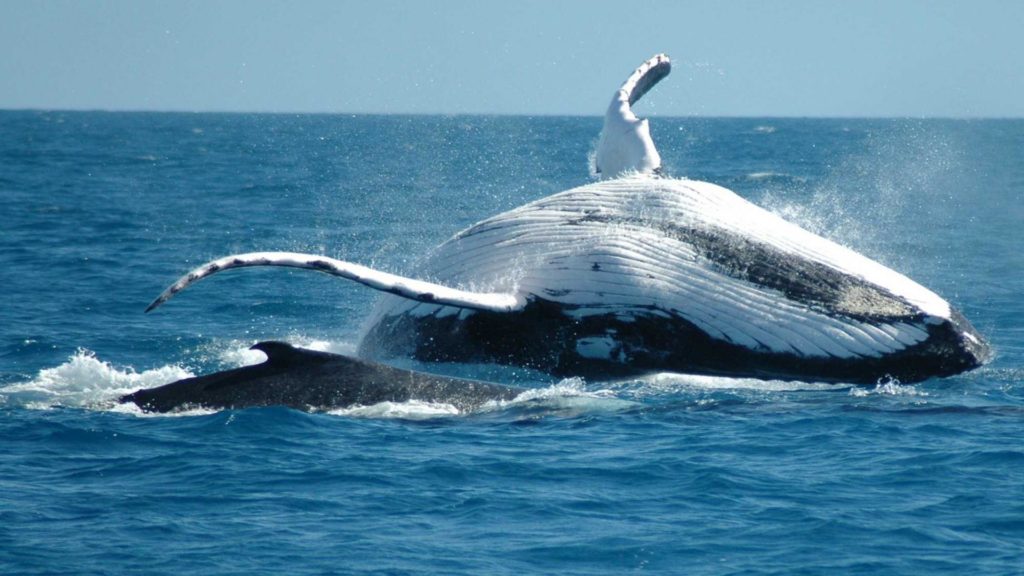
If you’re looking forward to the whale-watching show, you’re in luck. You can easily spot these beautiful creatures from most roads in Cape Town, with the most notorious being False Bay, just outside the city. Hermanus, while a two-hour-drive away from the capital, is worth the trip. The town lives the arrival of the whales with such enthusiasm that they even put on a festival: the Hermanus Whale Festival. There are live music performers, food tastings, sporting events, and of course lots of whale watching. Lastly, Plettenberg Bay on the Garden Route brings whale watching with beautiful stretches of coast line together.
Self-Drive Tours and Sightseeing
As we’ve mentioned, the Garden Route is one of the best places to visit in South Africa during the Spring months. The rain is coming to a halt and so the coast is painted in vivid colors, thanks to the flower blossoms in September. As the roads are in pristine conditions, driving up and down the Garden Route is pleasant and easy.
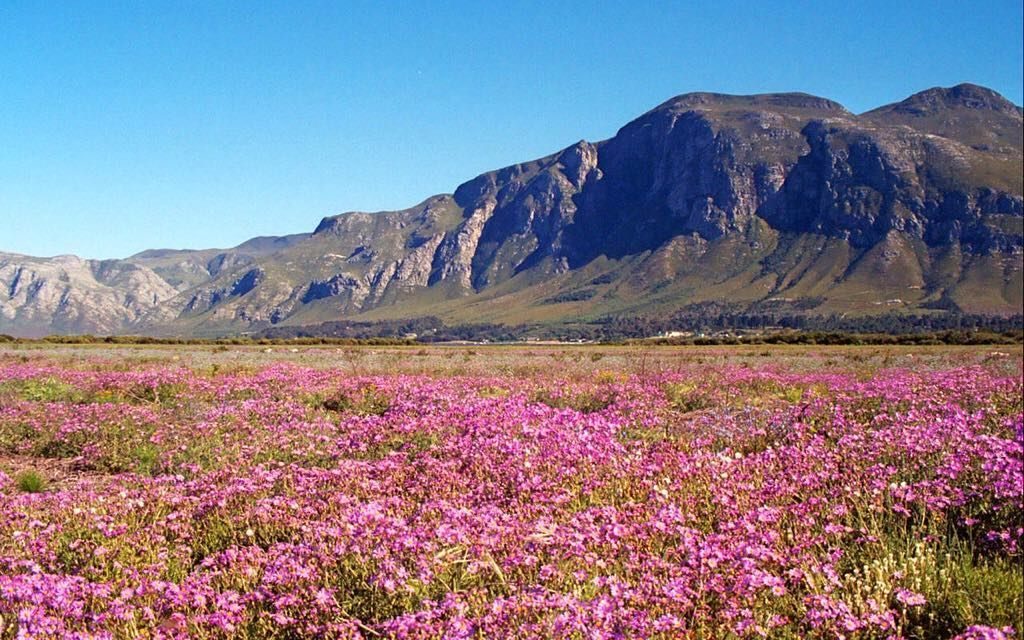
Start your trip in Cape Town and end it in Port Elizabeth, or the other way around! Along the way, don’t forget to pay a visit to the charming towns of Knysna, Plettenberg Bay, and the Cango Caves. If you haven’t already, stop by the Addo Elephant Nature Park — especially if you’re traveling with kids on a family holiday!
Durban is another of those must-see places when you’re in South Africa. The city is located in the Eastern coast of the country in the KwaZulu-Natal province and is known for its African, Indian, and colonial influences. November to March are the months to be avoided, as the weather gets very hot and humid. But September and October are perfect for a visit. While you’re in town, take in the beautiful architecture and notice how different it is from Cape Town. Make sure to also soak in as much of the local culture as possible, including the cuisine. Durban is so unique that you won’t find anywhere else in the world quite like it.
Events During the Spring
Since Spring is the season when most plants bloom after the short days of winter, it’s no wonder there’s a whole festival dedicated to vividly colored flowers endemic to the country. The Hopefield Fynbos Show takes place in early September and attracts visitors with its dramatically arranged flower stalls. This small town is painted in all colors imaginable — yellow, orange, red, green, blue, pink, you name it! Besides celebrating plant life, the event is also the time to learn more about local cuisine and tractor races. What better way to celebrate the arrival of Spring?
The province of KwaZulu-Natal is another must-go-to place on all destination guides for the spring. This region is considered to be the most traditional in the country in the sense that it still upholds centuries-old traditions, mainly those with deep African roots. For instance, in the first half of September, visitors are greeted to a four-day procession in which more than 10,000 Zulu women dress up in traditional apparel and make their way to the KwaNyokeni Palace. As the Zulu are the largest ethnic group in all of Africa, this is a time like no other to study up on their culture, history, and traditions.
For art lovers, Johannesburg welcomes the ten-day-long Arts Alive Festival. The event gathers international and local talents to put on concerts and stage dancing performances. This arts festival is one to be kept in mind if you’re visiting Johannesburg in September — it will surely engulf you in culture and positive vibes.
Visiting South Africa in the Summer
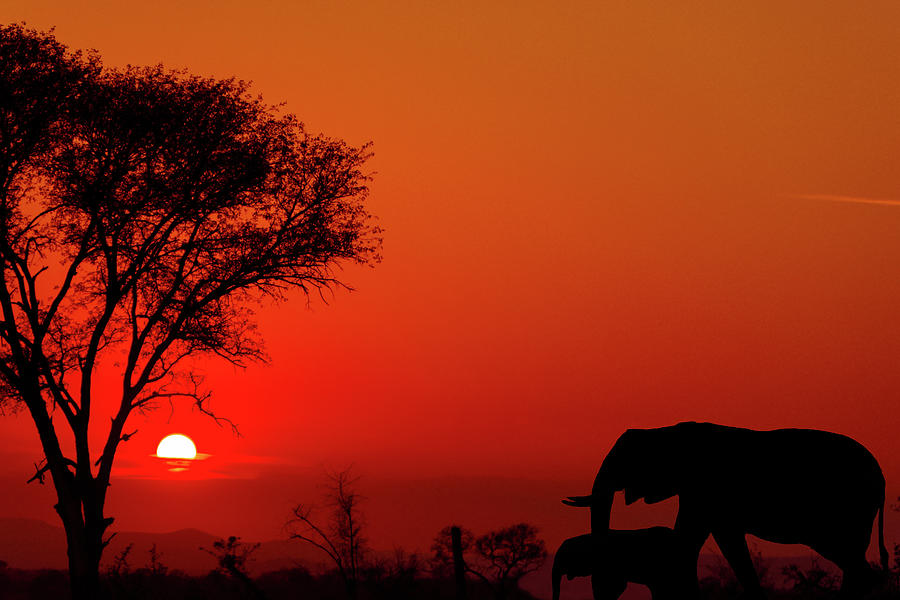
If you want a quiet, stress-free vacation, the months of December to March are best avoided. This is when the school holidays start and, as a result, when most tourist attractions become almost unbearably crowded. Not to mention that plane tickets and accommodation become much more expensive during the peak season. You will need to book all the tours you want to go on with months in advance — in some cases, maybe even a year!
The summer months are also those during which temperatures rise all over the country and the most humid. Thermometers often near the 100 degrees Fahrenheit, especially once you go inland. And not to mention that all the heat brings mosquitos, which may carry deadly diseases such as malaria.
But it isn’t all bad during the summer. Staying a few weeks in South Africa during the summer is better than not visiting the country at all. So what can you do if you’re planning on visiting the country in December, January, February, or March?
Bird Watching
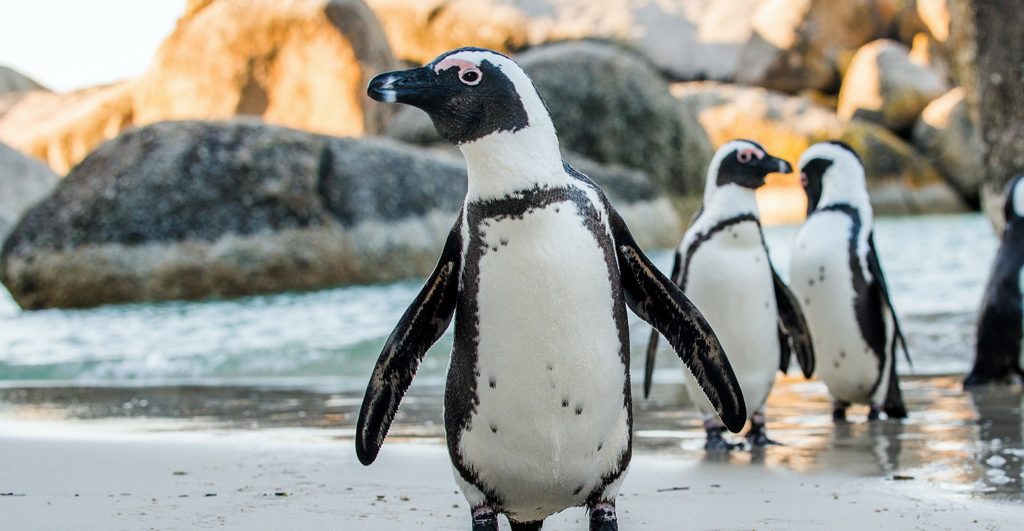
The summer is an excellent time to observe nature, which includes the flocks of migratory birds that fly down to nest during the Summer. As it is mating season, you’ll spot the more than 800 species of birds looking their best: all dressed up to impress a partner and breed. The most notable birds you may be able to spot if you go on a bird-watching tour are the African Penguin, the Blue Crane, the Crested Guineafowl, the Mocking Cliff Chat, and the Pel’s Fishing Owl. Pack up your camera, book a guided bird-watching tour months in advance, and get ready to see the sky darken as thousands of birds fly above your head!
Safari Tours
While safari tours are most enjoyable during the winter months, the game reserves in the southern part of the country are at their best during the summer. Going on a big game reserve tour is a family activity, perfect for children and adults alike. It’s the only chance you will likely get to be close to the largest predators in Africa and to the most infamous animals that inhabit the continent.
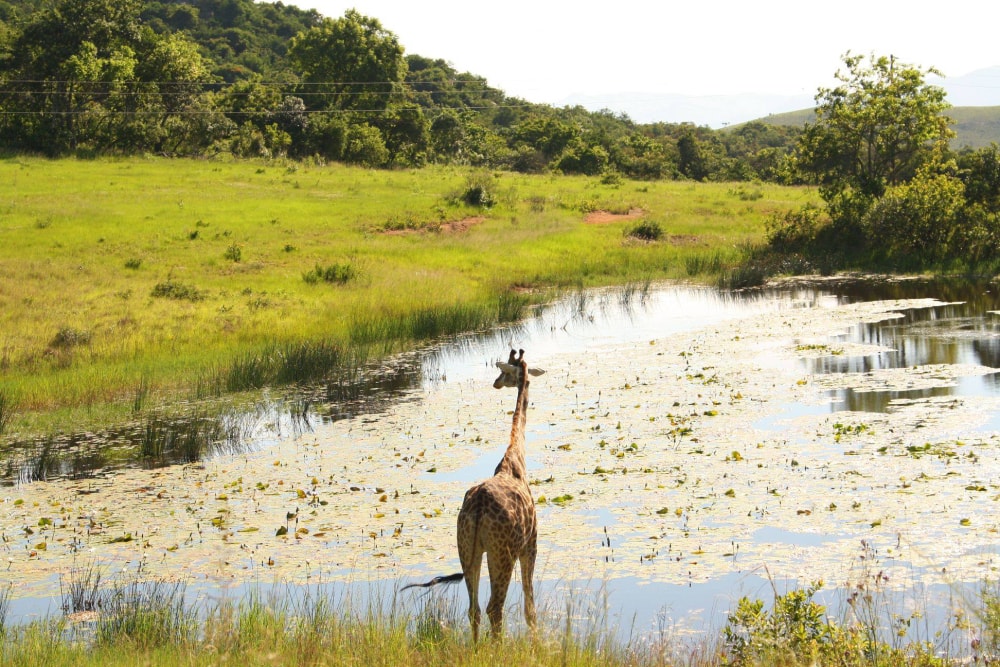
If you’re spending some time in Cape Town (you should), then the southern Inverdoon Game Reserve, Sanbona Wildlife Reserve, and Aquilla Private Game Reserve are the best place to start. All these parks offer a variety of guided tours, including morning and evening drives, overnight visits, and in some cases, horseback tours!
The only downsides, however, may be the heat, mosquitos, and crowds you will likely encounter. Nevertheless, going on a safari tour is one of the reasons to visit South Africa because it’s such a worthwhile experience. Pack mosquito repellent, thin long sleeve shirts, a hat, water, and of course a camera.
City Breaks
Unlike what happens with other cities during the summer, Cape Town boasts reliable weather from December to March. There is little rain, the days are long and sunny, and the temperature is perfect for a stroll or a hike: not too cold nor too hot. Now is the perfect time to sit outside and enjoy the great weather and even better views.
While you’re here, you should pay a visit to the Bo-Kaap neighborhood, located just a stone throw’s away from the city center. This vibrant-colored neighborhood dates back to the 18th century and is also known as the Indonesian and Malay quarter. As it was founded by South-East Asian slaves who were brought to South Africa in the 1700s by Dutch colonizers, today it still retains Malay customs and has a large Muslim community. The cuisine of Bo-Kaap is unique, so make sure to try the Cape Malay dishes.
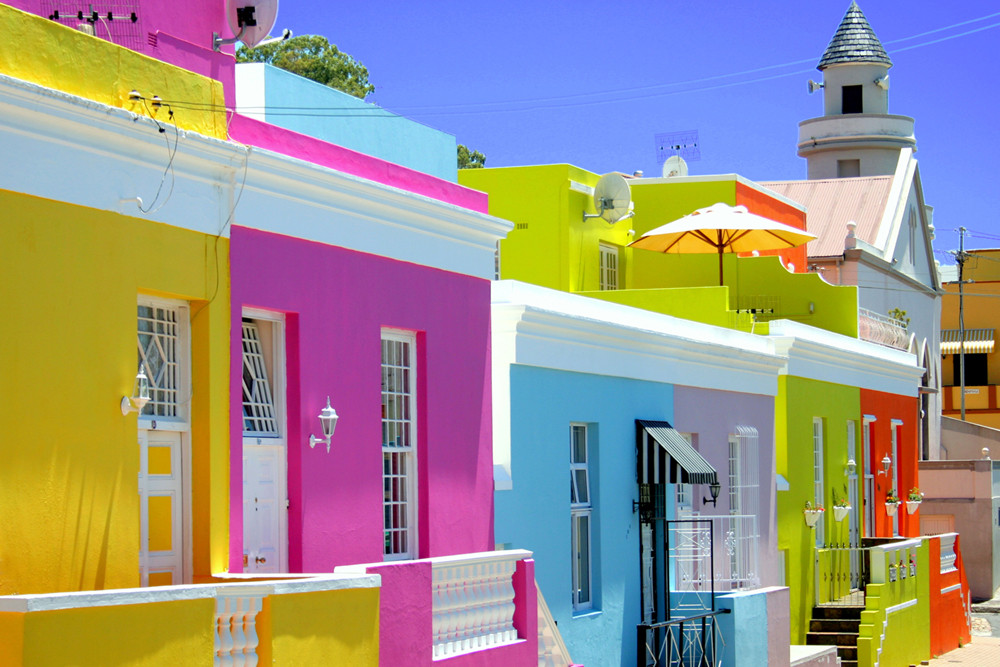
Visiting South Africa and not learning more about the apartheid is like going to Rome and not seeing the Pope. The apartheid regime was in place for so long and affected its citizens so heavily that it seems hard to believe South Africa was segregated just thirty years ago. If you’re curious about this time period, then the District Six Museum is the place to visit. It will take you on a journey through time and through District Six. While once it was a neighborhood where people of all walks of life coexisted peacefully, in the 1960s it was made a Whites-Only area, displacing more than 60,000 people. The museum tells you their sad stories during guided (or self-guided) tours that last a couple of hours, but they are stories that should be told and heard nonetheless. It’s a heartbreaking but enlightening visit.
Something not to be missed is a visit up to the Table Mountain. This rocky formation has cable cars that take visitors to its peak where they get one of the best glimpses of the city: an aerial view of Cape Town. The best times to make your way up there are in the early mornings or late afternoons, right before the sun sets. This way you will avoid some of the crowds, as well as the fog that sometimes descends upon the city. But keep in mind that this aerial view of Cape Town is a very popular attraction. Therefore, especially during the summer, the queues will be long. We recommend pre-booking your tickets online, but even then you will need to wait in line for your turn to go up. But once you’re up there looking down at the Mother City, you won’t regret having waited…
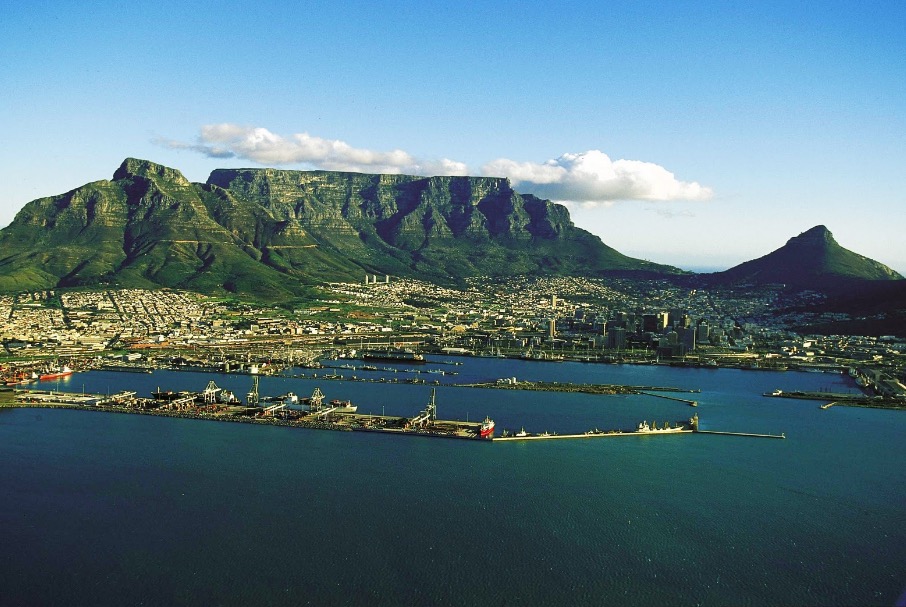
To end your Cape Town stay with the sun shining down, make your way to the V&A Waterfront. This pedestrian road along the shores of the ocean is perfect for an afternoon stroll. You can take in the beauty of the seaside landscapes and soak up the sun to get a nice tan. When you get hungry, visit one of the food stalls and get an artisanal treat to go. The Nobel Square is a great place to stop and rest for a bit as it offers plenty of opportunity to people watch. But don’t forget to pay some attention to the statues of the four South African men who have been awarded the Nobel Peace Prize.
Events During the Summer
In mid- to late-November, the Swartland Heritage Festival takes place. The event is a celebration of all things produced in Swartland, a region in the West Cape. However, the spotlight is on the wine the province produces and on the food. Any foodie will have to put the Swartland Heritage Festival down on their itinerary.
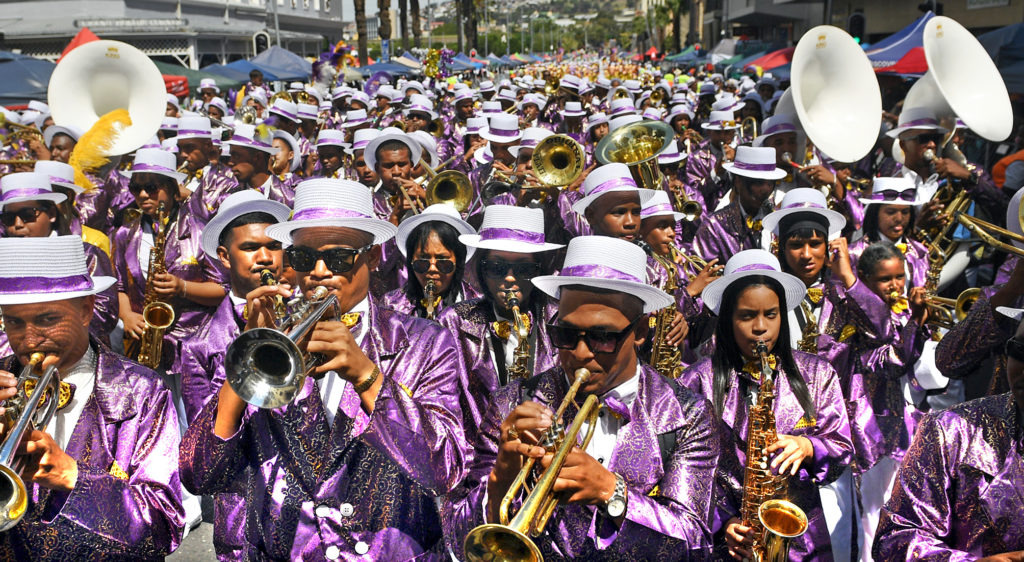
Lastly, to kick off the New Year, the Cape Town Minstrel Carnival (also known as “Kaapse Klopse” in Afrikaans) welcomes January 1st with a bang. The festivities last for an entire week and mostly involve parades, jazz music, and traditional music. Is there a better way to start the New Year?
Visiting South Africa in the Fall
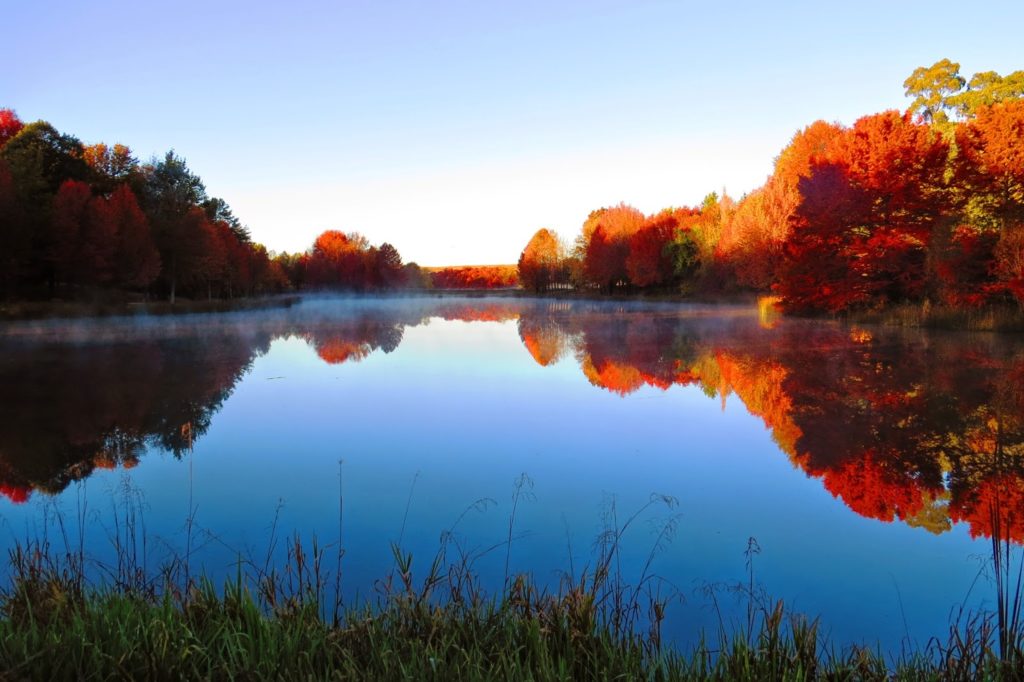
The months of March, April, and May make up the fall here in South Africa. In some parts of the country, the rains fall again to revive all the vegetation, while in others the rain slowly comes to a halt to give way to a dry winter. The temperatures are very pleasant and the humidity lifts, making the weather perfect for outside activities all over the country.
Hikes and Outdoor Activities
Now that the weather is near perfect, there is nothing better than a hike through nature. The Drakensberg mountains are the highest in all of South Africa and have stunned people with their beauty for centuries. So much so that in 2000, the area was considered a World Heritage Site.
Luckily, you can admire these dramatically cut mountains and the flowers that bloom everywhere around them from up close. There are hiking trails started at the base of the Drakensberg mountains and leading all the way up to almost 10,000 feet in height. But don’t worry! Even if you don’t have much experience hiking you can still enjoy this trip, as there are trails for all hikers. All you really need is a pair of healthy lungs and strong legs. Oh, and your camera of course!
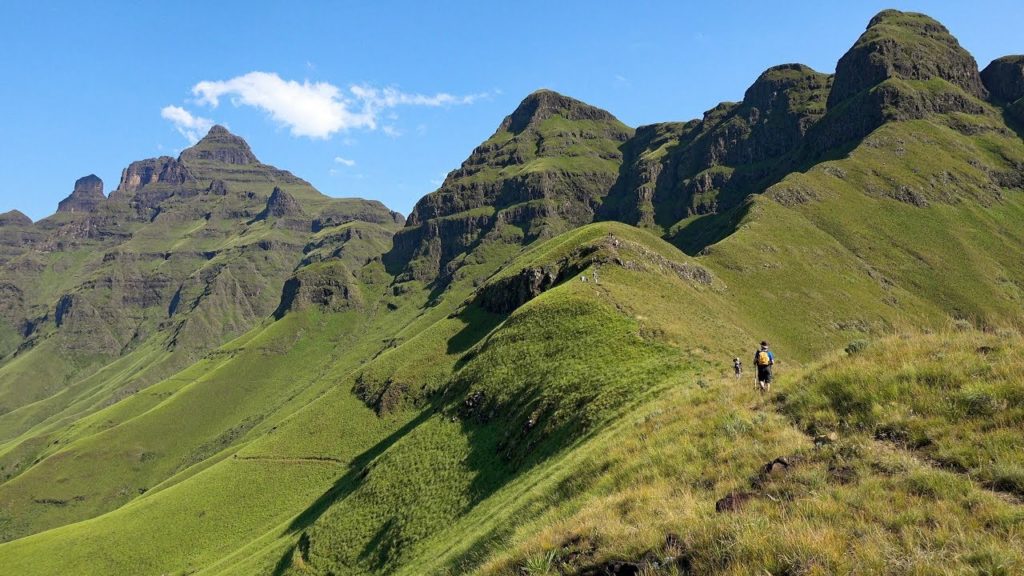
If hiking is not your thing, there are other activities to be done in the mountainside. White water rafting, for example, is a popular sport. Since the Drakensberg mountains have a stream with rapids in some places, a raft and plenty of muscle power is all you need for a morning and evening well spent. Horseback riding, too, is a possibility for you here in the mountains. There are several horseriding tours that take you on a stunning tour of the mountainside and they’re especially pleasant for families traveling with elderly relatives or with children. Lastly, you could get an aerial view of the Drakensberg area by going on a helicopter tour. You can buy tickets for these trips online and in advance — but be aware that these tours are not your straight-forward kind. There’s a reason why they’re called “helicopter flips”…
Beaches
You have probably heard everyone who has been to South Africa recount how beautiful the beaches were, right? Well, they’re not wrong. The fall months are an excellent time to head down to the seaside and even go for a swim. As temperatures are still very pleasant, a long relaxing day spent bathing in the Atlantic Ocean and tanning would sound perfect to just about anyone.
Cape Town has gorgeous beaches in its surroundings. Boulders Beach is a good choice for families with children, as there are lots of calm, nature-made pools here, as well as the occasional African penguin after a swim. Oudekraal is another alternative, great for groups of friends and couples on a romantic gettaway. Lastly, Muizenberg is another beach we recommend in the Cape Town area, especially for fans of surfing — both experienced and newcomers to the sport.
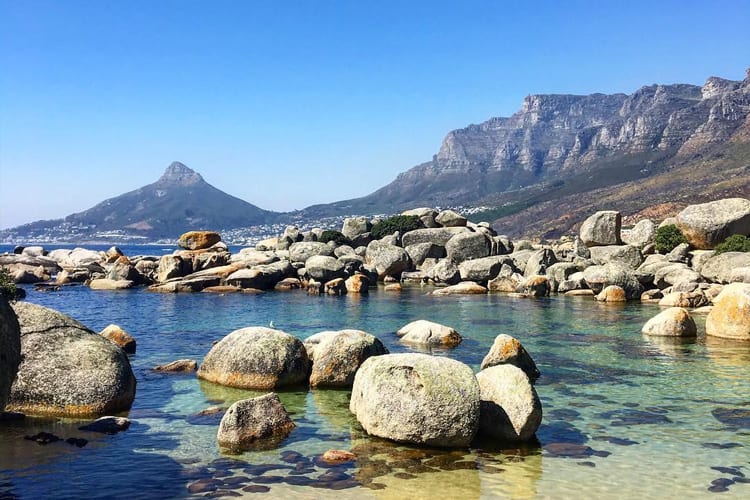
Perhaps the most well-known beaches are the ones located on the KwaZulu-Natal. This area has Indian Ocean beaches for all tastes: from golden sands to wilder, rougher stretches of coast. Margate Beach on the South Coast is a popular destination among families, since it is adjacent to a large holiday town of the same name. Bathing here is pleasant and safe, even for the little ones. Ramsgate, too, is a charming little beach with nature-made pools and a warm lagoon, perfect for families and couples. Lastly, we recommend Addington Beach on the North Coast. This often overlooked beach is located very close to a harbor and is therefore protected from strong currents and waves. Plus, the Indian Ocean water you will find here is exceptionally warm, making it great for swimming.
Events During the Fall
There are two main events going on in the autumn months in South Africa. The first is AfrikaBurn, a music festival very similar to the American Burning Man. Every year, toward the end of fall, international and local stars head down to the Tankwa Karoo National Park for concerts, art installations, and desert vibes. At the end of the event, the crowds gather to set fire to the pieces and say goodbye to AfrikaBurn — at least until the following year.
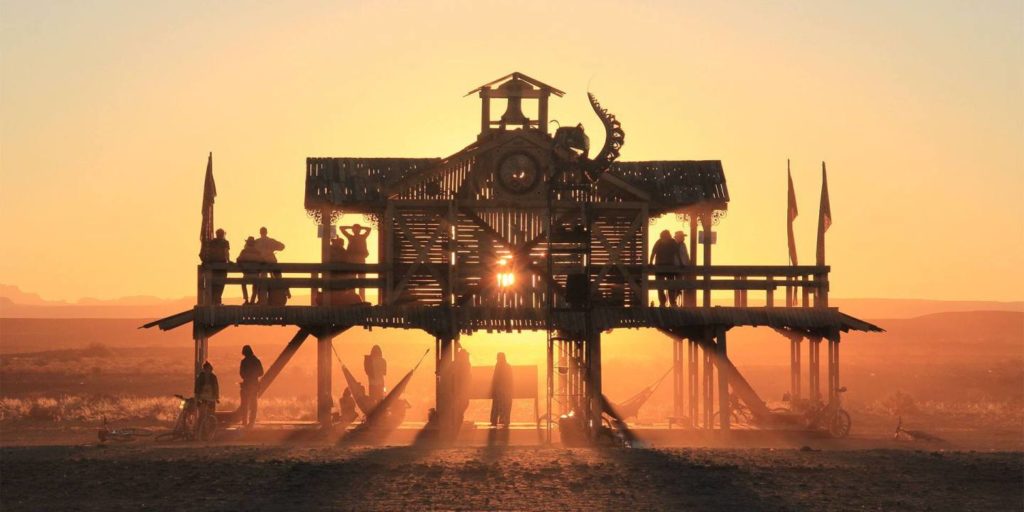
The other large event is the Cape Town International Jazz Festival that while also revolves around music takes a different approach than AfrikaBurn. Every year, early on in the spring, the city welcomes the fourth most notorious jazz event in the entire world. For a few days, jazz is king here and you can feel its presence everywhere. Tickets sell out months in advance, so if you’re a music lover, make sure to get yours early on!
Frequently Asked Questions About the Best Time to Visit South Africa
When is the peak season to travel to South Africa?
December, around the beach holidays. It is also around this time of year that visits to big reserves should be avoided, as there are always a lot of visitors, which can make your trip less enjoyable.
What is the best time to visit South Africa, Cape Town?
If you wanted, you could visit the city year-round, as the weather is mostly always pleasant and there are different events put on in different months. However, the summer months are maybe the best to see Cape Town for yourself. Being in the southern tip of the country, its summers are pleasantly warm and dry, allowing you to see the city without worrying about rain and unstable weather.
When is the best time to visit South African beaches?
Both Cape Town’s and KwaZulu-Natal’s beaches are at their best during the fall months of March, April, and May. The weather is quite pleasant, as the humidity has dissipated and temperatures aren’t as hot, and the rains haven’t yet hit them. The fall is also the best time of year to visit these beaches if you want to avoid the crowds, which can get out of hand in the summer months around the holidays.
When is the best time to visit safari parks in South Africa?
It’s best to go on safaris during the dry season, as this is when animals are easiest to spot. If the safari reserve is in the southern part of the country, the summer months are a good time to visit. Just be careful of the heat! However, if you plan on reserving a safari tour somewhere else in the country, the winter months are the ones you should be shooting for.
When is the best time to visit Johannesburg, South Africa?
The months between March and May and between September and November are the best to see Johannesburg. This northern, inland city has many gems to be discovered, and so traveling during the shoulder season is ideal. You will not only save money on flights and accommodation, but you will also ditch the crowds.
When is the best time to visit Durban South Africa?
Durban is best visited in the winter. June, July, and August make up the dry season, as very little to no rain falls during those months. The tropical winters are also great for travelers who hate humidity and want to walk around freely without faltering in the sun.
Do I need to be vaccinated to visit the country?
While most travelers are not required to prove they’ve been vaccinated against a number of diseases, the CDC and the World Health Organization strongly recommend immunization. If you’re traveling to South Africa, make sure to ask your physician about the Hepatitis A, Hepatitis B, Typhoid, Cholera, Yellow Fever, and Rabies vaccines. Especially if you are visiting rural areas, are an adventurous eater, or going on safaris during mosquito season, these travel vaccines are highly recommended.
Am I required to get a visa in order to travel to the country?
United States citizens do not need a travel visa to enter South Africa, as one can be purchased at the border upon arrival at the customs booths. You will, however, need a valid passport book with you that is valid for a further 6 months counting from the day when you enter the country.
Is South Africa safe?
Sadly, South Africa has garnered a reputation as a country where dangerous crimes occur frequently. While the numbers don’t lie and this is the sad reality of the Rainbow Nation, South Africa is relatively safe for the common tourist. The higher-risk areas are poor townships and neighborhoods where the vast majority of visitors will never set foot. However, as with every country people have an interest in visiting, it’s important to keep watchful and alert while outside. Applying street smarts has never let any tourists down.
